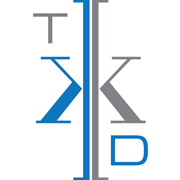Tracking Your Sales
You made a sale. You made several sales. Hooray! Now, how do you record it/them in your books?
Well, that depends. On what? On your terms of the sale. Let me explain.
For most small businesses a sale happens under one of these six sets of terms:
- Pay and carry/deliver – The customer pays you right away, and then he or she takes it with them (e.g. a retail store) or you deliver it later (e.g. furniture).
- Carry/deliver and pay immediately – The customer pays only when the product is delivered or service is completed (e.g. residential plumbing repair).
- Carry/deliver and pay later – The customer accepts delivery of your product, or your service is performed, and then pays within an agreed period of time (e.g. construction materials paid once monthly). The waiting period could be a few days to several months.
- Paid in advance – The customer pays in full for a service (typically) ahead of time, and it is delivered over a period of time in stages (e.g. website development).
- Pay as you go – The customer contracts for a product (e.g. rent to own equipment) or service (e.g. mobile phone) and pays regular (often monthly) equal payments.
- Pay upon completion of milestones – The customer agrees to a job being completed for an agreed-to estimated price and pays as milestones are achieved (e.g. home renovations).
Regardless of the terms, the bookkeeping will always have some or all of these two steps.
- Record the sale (payment immediately received) or invoice the customer (delayed payment)
- Receive payment
Receipts vs. Invoices
A receipt shows payment has been made. Many vendors list the items paid for in that transaction. An invoice stamped (or written on) “Paid” also becomes a receipt. A cashed cheque can act as a receipt too, but it’s not the best.
An invoice is a list of goods sent or services provided, with a statement of the amount due. It’s a bill. Invoices aren’t usually written for retail sales; too many customers each spending too little per sale. They are reserved for businesses with fewer customers and sales, and where more detail is needed, or if payment is not immediately due.
Paying for the Sale
There are three ways customers pay when buying delivery of the product(s) or service(s):
- Before – Receipt and usually invoice provided.
- At the time of – Receipt and sometimes invoice provided.
- Later – Invoice provided, and receipts provided upon receiving payments.
Recording the Sale
When the sale is made it should be recorded right away (which really means the next month when this month’s activity is processed). There are two ways this is done in the books:
- Sale – Product/service delivered, payment immediately accepted.
- Accounts receivable – Product/service delivered, payment accepted later (e.g. within 30, 60 days)
Not keeping track of accounts receivable (A/P) is a big mistake made by many small business owners. This often occurs because the wrong software is used, like a spreadsheet, and/or the terms are not entered correctly. This can be a significant service provided by a professional bookkeeper.
Examples
How sales are recorded depends upon what the business owners wants to know. Here are typical examples:
- Retail store – Usually many sales are made each day, and are done anonymously. No invoices are created. In other words, the store does not track who bought how much for each sale. The owner aggregates sales into one amount either by day, week or month.
- If totals are recorded more often then more information about sales is available. Of course, more time will be spent recording these amounts.
- Trades services – Fewer sales are made each day, and individual invoices are completed for each job (e.g. appliance repair) because customers demand an explanation of work performed. Payment is immediate. Usually sales are recorded when payment lands in the business’s bank account. This could be deposits by a payment processor (e.g. for credit/debit cards) or cash/cheque bank deposits.
- If the number of customers is limited and each is written down, then sales could be recorded one-by-one by customer. Again, more effort is needed but may be well worth it to gain insight on the company’s sales profile.
- Renovations contractor – There are not many monthly sales (i.e. 1 to 10) but the dollar amount of each is large. Often milestone payments are made as the job progresses towards completion. Sales are usually recorded one-by-one by customer. Invoices are always created. They can be handled in one of two basic ways:
- Write an invoice in the full amount at the beginning, and apply milestone payments against it. This works well if the business owner is confident of the final amount.
- Write invoices for each individual payment. This allows for more flexibility in case the total amount changes.
- Business coach – The customer enrolls in a year-long coaching program, with monthly payments during that period. Again, the business owner can choose from one of two ways of recording the sale:
- Create an invoice for the whole amount, and then apply subsequent payments against it.
- Create monthly invoices to bill the customer, and apply payments against them one by one.
There are many different combinations of ways a small business owner can arrange payment terms. They can be different year by year, or job by job or customer by customer.
Communication with your professional bookkeeper is the best way to ensure everything is recorded properly so that your books tell the correct financial story, and you get your money when you deserve it!










